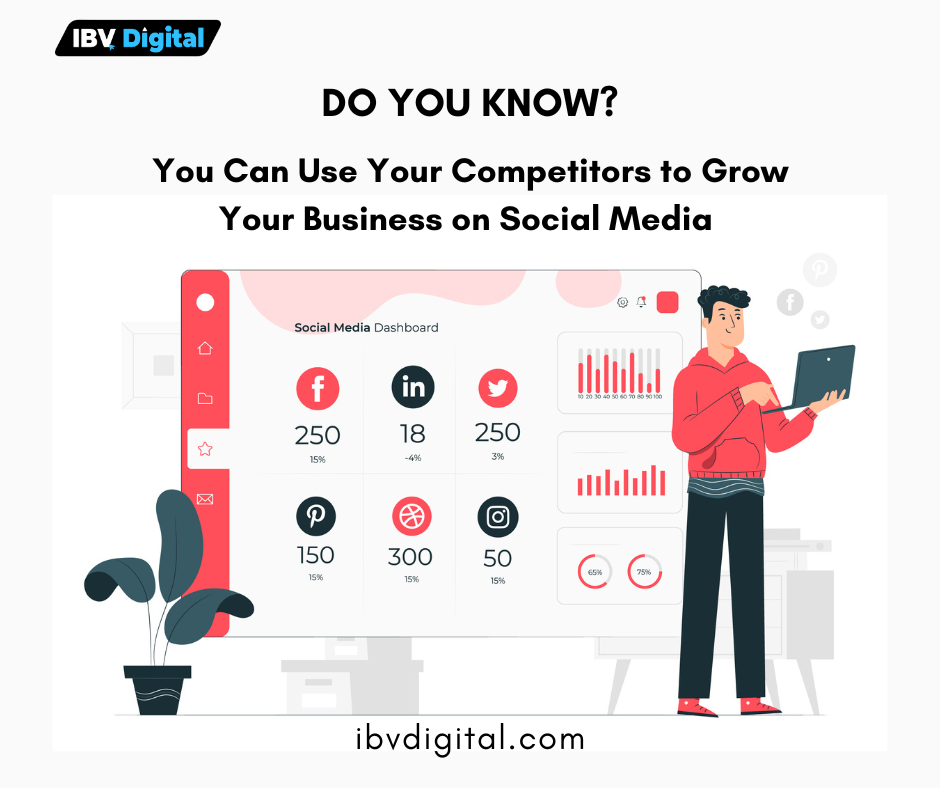Imagine sitting across from a mentor who’s been in the digital marketing game for years, sipping coffee, and leaning in as they drop golden nuggets of wisdom. That’s exactly how I want you to feel as you read this. Today, we’re talking about one of the most powerful yet often underutilized strategies in social media growth: competitor analysis.
Now, I know what you’re thinking: “I don’t want to copy anyone!” And you’re absolutely right. This isn’t about copying—it’s about learning, adapting, and then innovating to create something uniquely yours. Whether you’re a startup trying to make a name for yourself, a small business looking to expand, or an established brand wanting to stay relevant, competitor analysis can provide the insights you need to grow.
So, grab a cup of coffee (or tea, no judgment), get comfortable, and let’s unpack how you can use competitor analysis to fuel your social media growth strategy.
Why Competitor Analysis is a Game-Changer for Social Media Growth
You know the saying, “Keep your friends close and your enemies closer”? In business, your competitors are not your enemies, but they sure can be your best teachers. Here’s why:
Learn What Your Audience Loves (and Hates)
Your audience is out there, engaging with content daily. They’re liking, sharing, commenting, and sometimes even venting their frustrations. And guess what? They’re doing this on your competitors’ pages, too! By observing this, you can learn:
- What resonates with them.
- What annoys them.
- What makes them click that ‘Buy Now’ button.
Example of Learning from Audience Behavior
Let’s say you own an online clothing store. You notice a competitor getting tons of engagement on their behind-the-scenes videos showing how they design their outfits. This tells you your audience values transparency and wants to feel connected to the brand story. Why not try your own behind-the-scenes videos, but with a twist? Maybe you could include customer testimonials or a “day in the life” series with your team.
Discover High-Performing Content Types
Not all content is created equal. Some posts go viral, while others barely get a double-tap. Analyzing your competitors helps you identify high-performing content formats like:
- Short-form videos (Reels, TikTok)
- Carousels
- User-generated content
- Educational posts
Example of Leveraging Content Formats
You’re running a beauty brand and notice a competitor’s makeup tutorials are blowing up. That’s a sign! But don’t just copy their style—make it yours. If they’re doing glam looks, maybe you can focus on “5-minute morning routines” or “makeup hacks for beginners.” The goal is to keep the format but change the narrative.
Step 1: Identifying Your Competitors
This might seem straightforward, but you’d be surprised how many businesses get it wrong. Competitors aren’t just those selling the same products as you—they’re also anyone capturing the attention of your target audience. There are three types of competitors to consider:
Direct Competitors
These are businesses selling the same products or services to the same audience. If you own a pizza shop, another pizza shop in your area is a direct competitor.
Indirect Competitors
These brands don’t offer the exact same product but satisfy a similar need. If you’re a gym owner, a YouTube fitness influencer who offers online workout programs is an indirect competitor because they’re targeting the same health-conscious audience.
Aspirational Competitors
These are industry leaders you admire. They may not be in your local market or offer the exact same products, but they’re doing something right, and you want to learn from them.
How to Identify Your Competitors:
- Google Search: Search for industry-related keywords and see who ranks at the top.
- Social Media Hashtags: Explore popular hashtags in your niche to find top-performing accounts.
- Competitor Analysis Tools: Tools like BuzzSumo, SEMrush, and SimilarWeb can help you discover who’s capturing the most attention in your industry.
Step 2: Analyzing Their Content Strategy for Social Media Success
Alright, you’ve identified your competitors. Now what? It’s time to dig deep into their content strategy. Here’s how:
Analyzing Content Types and Themes
Different types of content resonate with different audiences. The key is to identify the types of content that perform well for your competitors.
Example of Content Strategy Analysis
Imagine you’re in the tech industry, selling productivity tools. You notice a competitor’s educational posts explaining how to boost productivity at work are doing exceptionally well. You can take this insight and create your own series on “Productivity Hacks for Remote Workers” or “How to Balance Work and Life with These Productivity Tools.”
Studying Content Formats
Observe the formats your competitors are using:
- Short-Form Videos
- Carousels
- Static Images
- User-Generated Content
Example of Innovating with Formats
A bakery noticing competitors’ baking tutorials going viral can start their own series, like “Quick Baking Tips” or “Behind-the-Scenes: How We Make Our Signature Cupcakes.”
Step 3: Understanding Posting Frequency and Timing
Observing Posting Frequency
- Do they post daily, weekly, or multiple times a day?
- Is there a pattern, or is it random?
Identifying Optimal Posting Times
- When do they post—mornings, afternoons, or evenings?
- Which time slots yield the most engagement?
Example of Leveraging Posting Times
If a competitor’s posts consistently get high engagement around lunchtime, try scheduling your posts around the same time to see if your audience responds similarly.
In Conclusion:
Competitor analysis is like having a cheat sheet in the game of social media marketing. But remember, it’s not about copying—it’s about learning, innovating, and then making it your own.
For awesome social media marketing strategies that always convert prospects to clients, IBV Digital offers an all-in-one digital marketing strategy that will not fail to deliver.
